A gun by Richard Jeffery is not something that would normally raise my interest levels or set my pulse racing in normal circumstances but when one arrived in the office from auction, having been bought by me on behalf of a customer who lives overseas, I found the contents of the box more interesting than I expected.
Now, the engraving on the rib is interesting - and not quite truthful. It reads; ‘Richard Jeffery, Maker, High Street Guildford’. However, Richard Jeffery was certainly not the maker and the gun does not hail from Guildford workshops. It was, in fact, made in Islington by one of the best makers to the London Trade; Edwin Hodges.
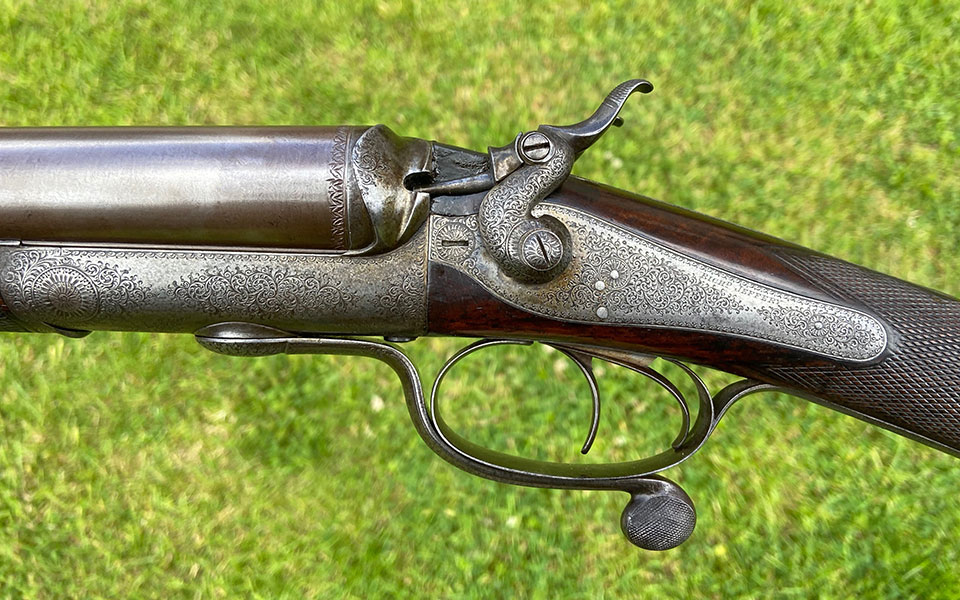
Richard Jeffery traded from that address from 1858 to 1878, thereafter it changed the style to Samuel Richard Jeffery and then S.R Jeffery, presumably when it passed to the son of the original proprietor.
E.C. Hodges is perhaps most often noticed when his name appears on patents in conjunction with Stephen Grant. Grant sold guns on the 1866 patent and the 1871 patent they collaborated on. The former covers an extractor cam and the latter, a treble-bite action with side-lever, which neatly side-steps the patent protections afforded to the Purdey bolt and Scott Spindle. The 1871 pattern back-lock gun became a recognised house style and Grant stuck with side-levers well into the hammerless side-lock era.
...proof marks are pre 1875 and they bear the initials E.C.H where the barrel maker would normally stamp...
However, this gun, that Hodges built for Richard Jeffery, is quite different. The original proof marks are pre 1875 and they bear the initials E.C.H where the barrel maker would normally stamp his. The action is stamped with the Hodges trade mark of a triangle topped with a crown and ‘ECH’ within. On the breech face there is another identifying stamp ‘ECH Patent 838’.
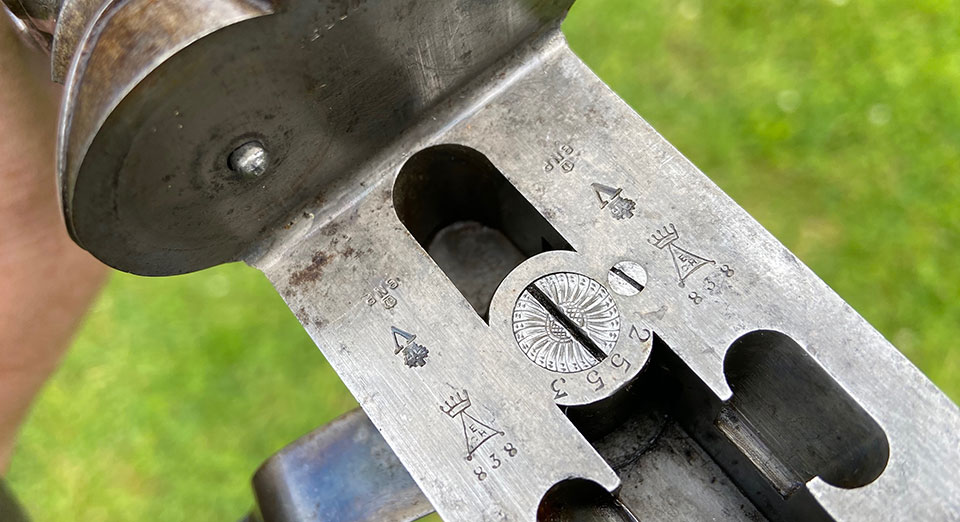
Hodges was certainly not hiding his involvement, which makes the lie on the rib more curious - if Jeffery wanted to claim to be the ‘maker’, why did he allow Hodges to put his mark so obviously on the gun? The outworkers and factories responsible for building guns anonymously for most of the firms that retailed them were kept unidentified by the retailer for obvious reasons.
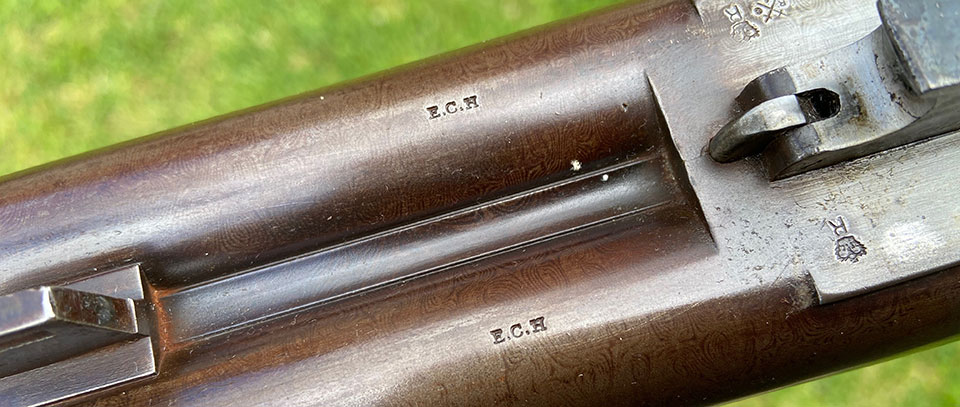
The locking mechanism is the Jones screw-grip with under-lever. The retaining pin s concealed by placing it on the top side, accessible only when the barrels are off the action. This is a nice refinement. Many guns with this lever arrangement have a slot under the bar, on the lever pivot.
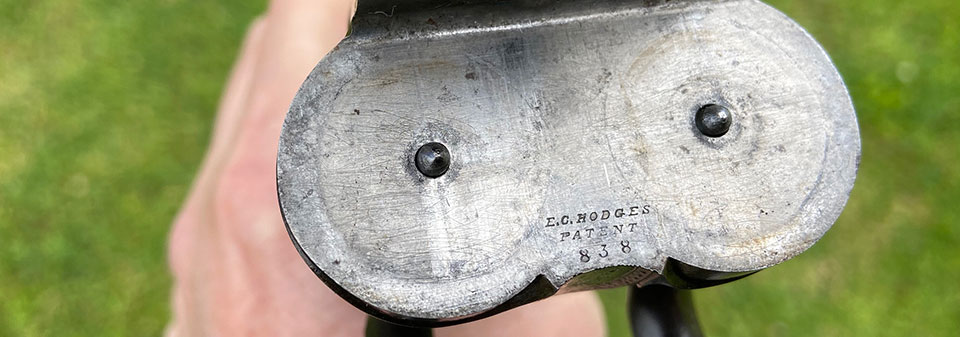
The other notable thing about this gun is the striker arrangement. It has non-rebounding back-locks and hammers that are fitted with long strikers, which hinge on a locking pin and extend through the breech face. When the gun has been fired, they are manually retracted when the hammers are pulled to half-cock. A common problem for shooters in the early days of centre-fire was the sticking of strikers in soft percussion caps in the new cartridges. They effectively bolted the gun shut.
These manually retracted strikers ensured that no such problem could manifest itself on a shoot day and utilised an action that had to be performed anyway - pulling the hammer back to half cock to open the gun. A number of makers had a variation on this theme, including Greener and Horsley.
It is likely that ‘838’, which is stamped on the gun, is the patent use number...
Hodges patented a ‘two-piece striker & extractor in 1865 (No.3113) but it is not this. It is likely that ‘838’ which is stamped on the gun is the use number rather than the patent number. It rather resembles the Powell patent of 1869, but not quite.
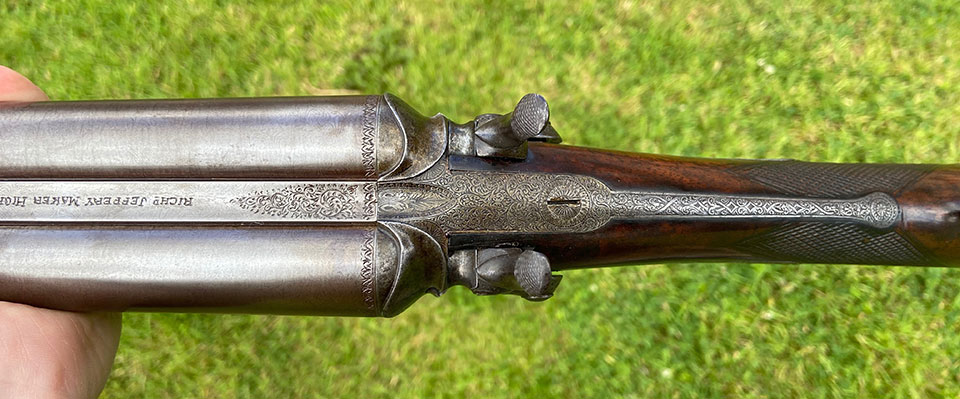
Rebound locks were in use by 1868 so this gun probably pre-dates 1870. It remains in very good condition considering it is over a hundred and fifty years old.the chequer has been re-cut at some point but the wood remains just proud of the metal, or at least flush in most places except the top strap and forend finial, where it has receded a little.
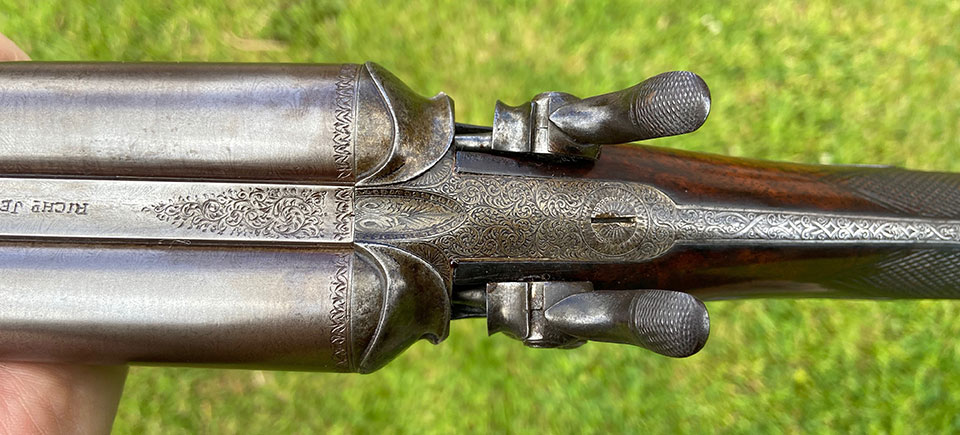
The original case colours have worn off but traces of original blue remain in less exposed areas of the trigger guard and strap. The gun has been re-jointed and the barrels re-browned. The only real flaw is the amateurish re-engraving of the name and address on the rib, which looks like a child did it with a Dremel.
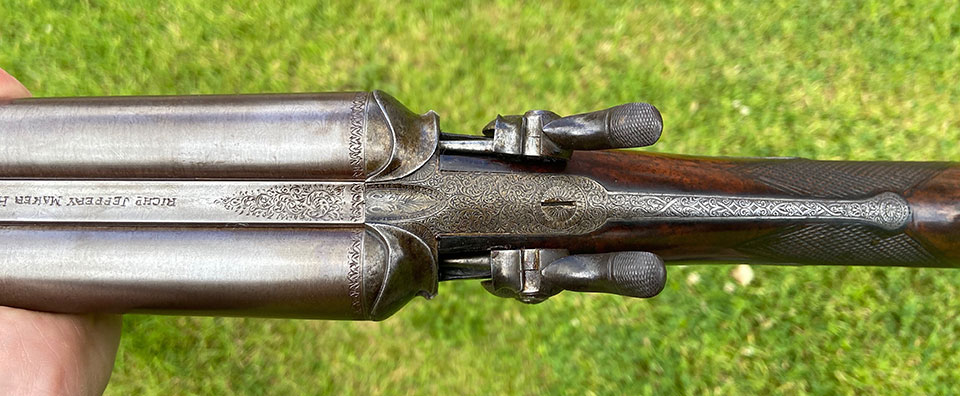
Guns like this, built on interesting transitional patents are great fun; they work and often show solutions to problems that were not bad - but were surpassed by better ones quickly after they were made. When they are as well made as this Jeffery, which is of very high quality, they remind us that almost any retailer, regardless of location, could put out the best work. This ‘Guildford gun’ made in London by a maker who produced guns for the finest London names stands as evidence of that.
The patents and trade marks on this gun have helped us understand its origins and link long dead gunmakers from a time long gone.
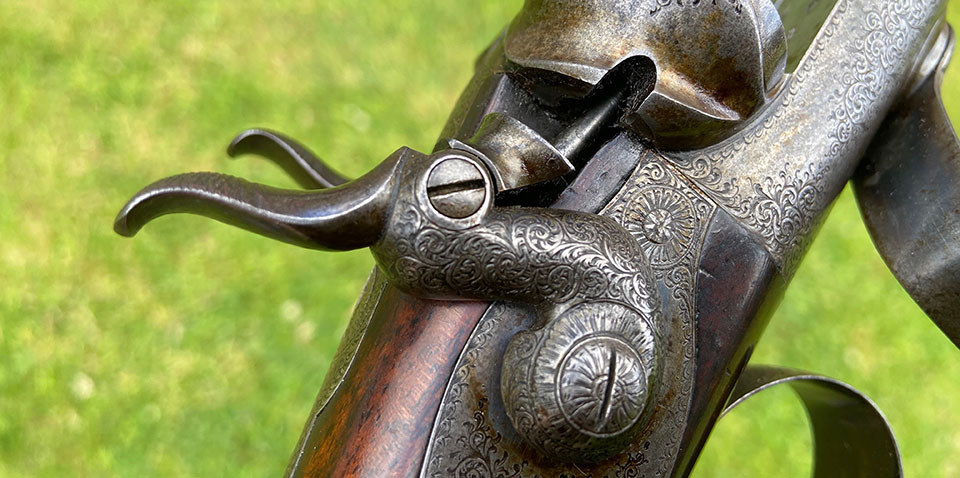
This type of self-extracting striker is quite rare but examples do emerge from time to time. The photograph below is of a bar-action gun by Morrow of Halifax, with a very similar striker arrangement. In use, the system is effective and trouble-free.
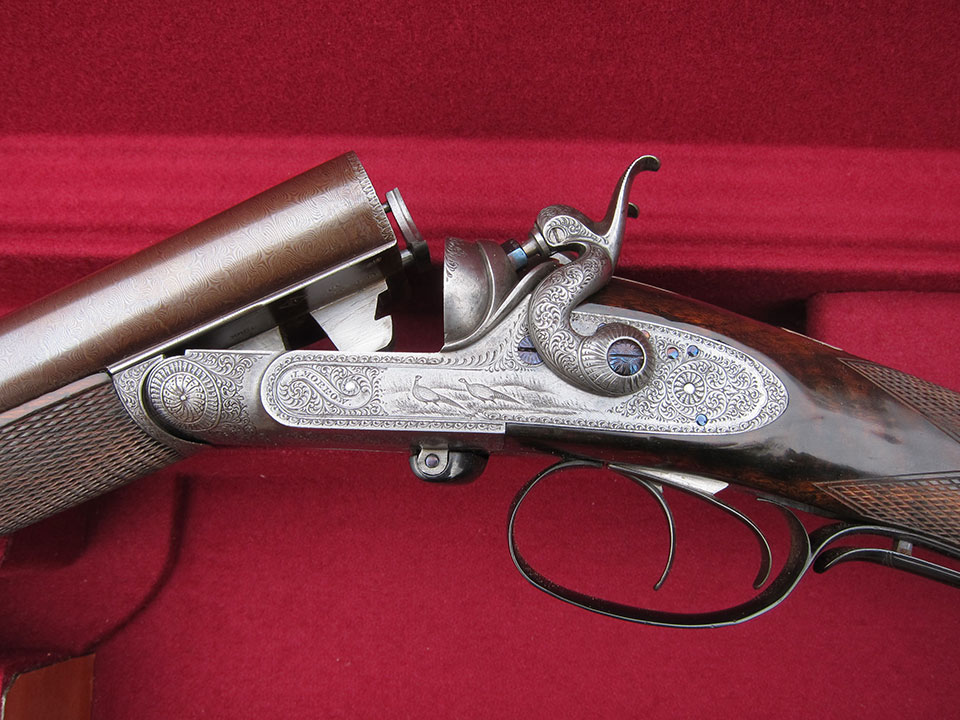
Published by Vintage Guns Ltd on (modified )




